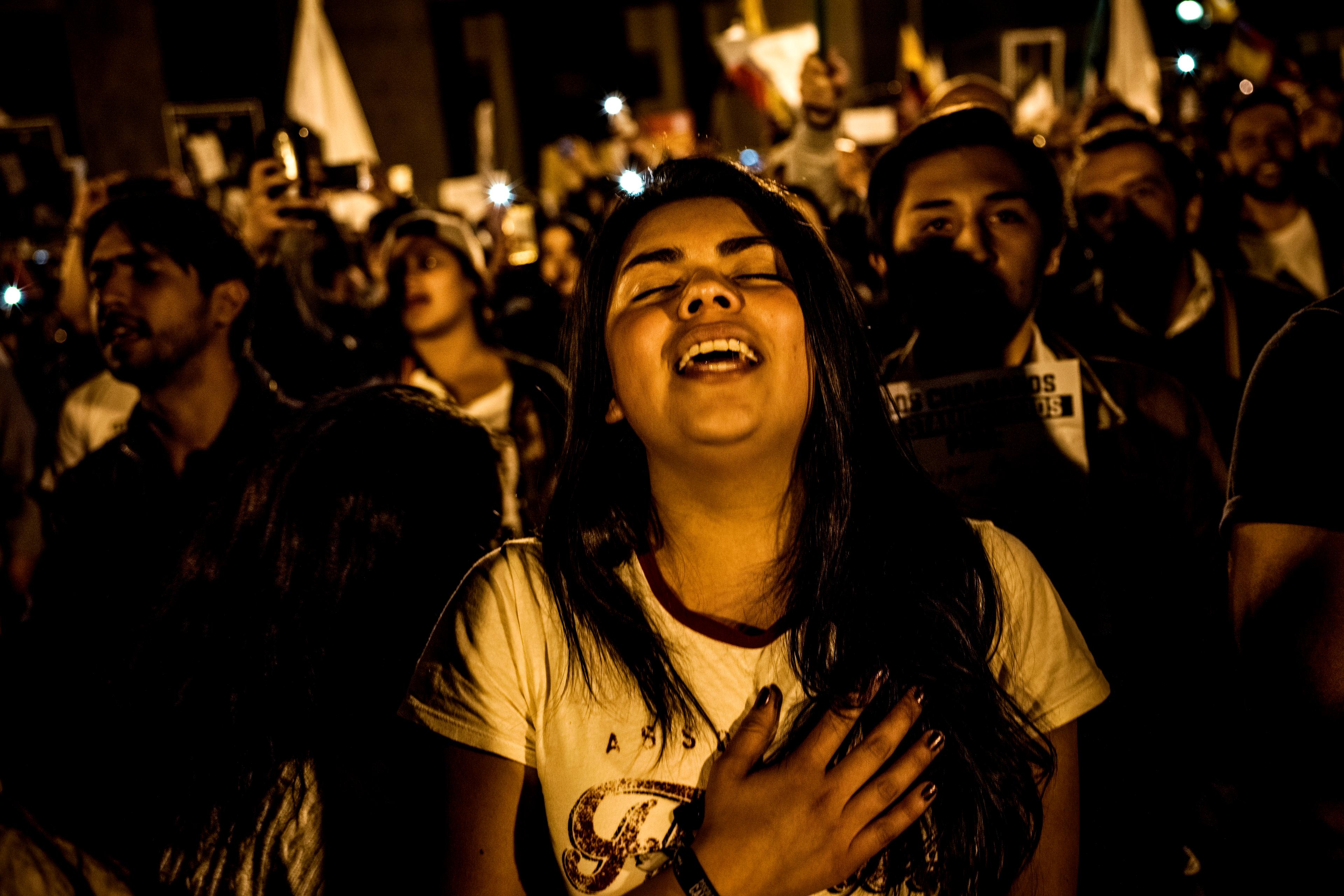In Haruki Murakami’s novel Kafka on the Shore (2002), 15-year-old Kafka Tamura wakes up one night to a young girl sitting at his desk. She’s too beautiful to be real, and Tamura decides she must be a ghost. He pretends to sleep, wrapped in his covers, as her gaze turns to him.
‘I don’t know how long she looks at me,’ writes Murakami. ‘Time’s rules don’t apply here. Time expands, then contracts, all in tune with the stirrings of the heart.’
You’ve probably experienced for yourself how time can behave strangely in moments of emotional intensity. A few minutes stretch out to eternity, or an hour passes with dizzying speed. It’s why we have sayings like ‘Time flies when you’re having fun’ or ‘A watched pot never boils.’ As Irena Arslanova, a cognitive neuroscientist at Royal Holloway, University of London, tells me: ‘We only really notice time when it does something weird.’
Arslanova’s research is beginning to reveal what exactly is happening in these moments – and why. In her recent study in Current Biology, Arslanova and her collaborators focused on the connection between the experience of time and the beating of the heart. They found that people’s perception of time was affected by whether their heart was currently in the process of contracting to pump blood (known as systole), or if it was relaxed after a contraction (known as diastole). The results show how our perception of the passage of time is both subjective and elastic; and, as Tamura noticed, it’s often related to the body, or as he called it: the ‘stirrings of the heart’.
‘What we’re trying to say is: time is embodied,’ Arslanova explains.
That the body might influence how we perceive time was established in 1927 when the French researcher Marcel François shocked three young women with high-frequency electric current to alter their body temperatures. He found that raising their temperature hindered their ability to accurately assess durations of three and four seconds.
More recently (and less painfully) when researchers asked people to reflect on their bodily sensations, they reported that negative experiences felt longer, and positive experiences passed by more quickly. People have also reported time passing more quickly during events paired with higher heart rates, and people who are better at perceiving their own heartbeats do better on tasks where they have to reproduce how long something was. But exactly how the body and time perception relate to each other has been elusive.
Unlike some of our other main senses that rely on dedicated organs to process tangible information (for instance, the way our eyes detect light and our ears detect sound waves, with that information then passed to specialised regions of the brain), when it comes to the perception of time, there’s no time-sensing organ nor a single specialised brain area for processing time. Instead, we might infer time through detecting change, Arslanova tells me. Our bodies are constantly undergoing fluctuations, such as the beating of the heart, or activity in the brain. The sensing of these fluctuations could be what gives us the sense of time.
In her study, Arslanova presented volunteers with various stimuli – such as an emotionally neutral image, a tone, or an image of a happy or fearful facial expression – between 200 to 400 milliseconds’ duration (500 milliseconds is the same as half a second). Their task was to estimate whether each stimulus lasted for closer to 200 ms or 400 ms, or whether it felt short or long. Between their heartbeats, the participants tended to experience the durations as longer, as if time were slowed down. During a heartbeat, people perceived the durations as shorter, as if time had been speeded up. When participants rated the faces as more emotionally intense, this was also associated with time appearing to be speeded up.
Most of the time, the contraction and expansion of the heart, and their effects on time, cancel each other out. ‘It will actually give you an average sense of time,’ Arslanova says. But based on their findings, her team suggests that, when the heart speeds up and there are more contractions than relaxations, it might lead to the feeling of time appearing to speed up.
In another recent study, Marc Wittmann, a psychologist at the Institute for Frontier Areas of Psychology and Mental Health in Germany, and his colleagues found temporal wrinkles – when time dilates or contracts for short periods – that also synchronised with the beating of the heart. A lower heart rate was associated with subjects saying a millisecond was longer, whereas a high heart rate led to the opposite feeling.
There are some inconsistencies to work out. During highly emotional states, when the heart often beats faster, people will sometimes report time seeming to slow down rather than speed up – the classic example would be time standing still during a car crash. Next, Arslanova says her team plans to look at the brain to see what’s happening during systole and diastole, which might help explain the contradictions.
Research into how we perceive time, and its connection to the body, could help us understand the cases when mental distress is associated with time’s distortion. For instance, people with depression often experience time slowing down and, in some cases of post-traumatic stress disorder, moments that occurred in a flash are prolonged, and revisited over and over again. A pathway to helping people manage their experience of time could be through manipulation of their body.
‘It’s quite difficult to change our emotional experiences, but it’s actually quite easy to slow down our breathing, and try to slow down the heart,’ Arslanova says. Many mindfulness-based therapies involve slowing down the heart by slowing down breathing. Experienced meditators say that their practice causes time to slow down, both during meditation and in everyday life.
This line of work is also a reminder of the individual nature of our temporal experiences. In Félix González-Torres’s art piece Untitled (Perfect Lovers) (1991), two clocks are hung side by side – initially set to the same time, but eventually they fall out of sync. The piece is about the asynchrony that inevitably occurs between lovers, and it’s also an apt metaphor for the subjectivity of our experience of the passage of time. In any moment or event, the person next to you may be experiencing duration slower or faster than you, in part because of what their body is doing.
‘We are embodied creatures and our feeling states and perception, the essential ingredients for self-consciousness, are dependent on the workings of the body,’ Wittmann tells me. ‘Even something so subtle as judging millisecond duration depends on the heart. Your conscious self is realised through your body.’








